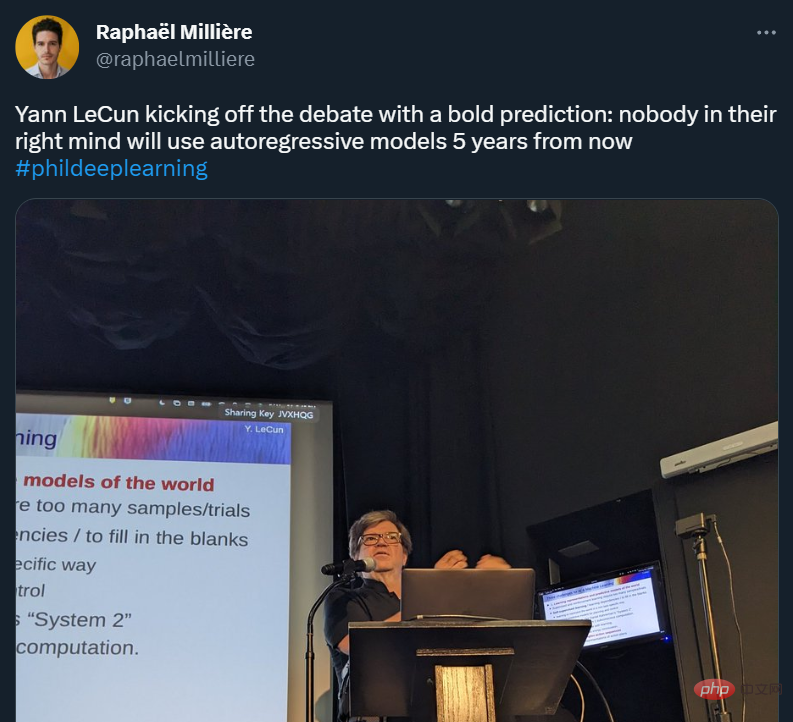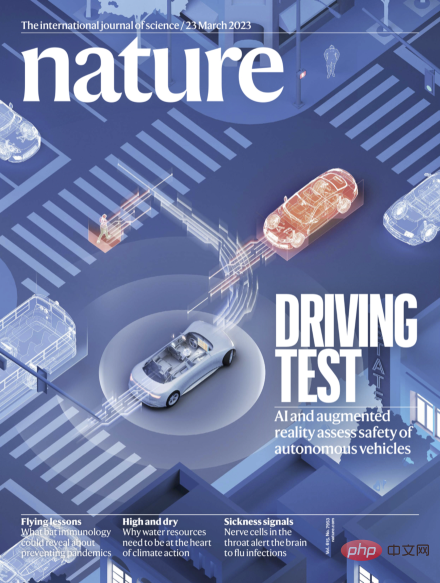
Translator | Cui Hao
Artificial intelligence (AI) is expected to completely change us The world , although there is no such dramatic thing as robots with sentience taking over society occur. But, the computer algorithmcan Perform complex tasks effectivelyThere is no doubt that this is intelligence.
For the field of construction, in many aspects of , artificial intelligence will serve as the perfect tool to build this field. considers artistic elements when designing buildings and outdoor spaces Design,At this time, a lot of is needed Intelligent operation.
If you break down the architectural design into numbers, Then the computercomputer can participate. The geometric shape of the space, reasonableutilizationbuilding materials , The quantity of building materials used, wind direction, load-bearing, and even foot traffic are all Can we use the artificial intelligencematurefields. Of course,
artificial intelligenceas a design program In part, computers have done some of this work in preliminary ways. However, the promise of artificial intelligence is that computers will figure out solutions to #design problems in ##ThereforerequireslimitedmanpowerIntervention. At the time of writing, artificial intelligence in construction is moving forward through research and experimentation. Also take into account the complexity and expense of many construction projects. Despite this, its development is still Excited ,The research results packageIncludes many commercial products from startups and major technology companies. Generative Design The Construction Industry is a major focus of AIapplication. However, ML is not the same as AI, but a subset of a more important discipline. Using Machine Learning (ML ), is to create and train the algorithm, and then through continuous modeling and testing, after Keep tryingto incremental improvements method to complete the task. Thisa processis similar to human learning by rote learning, just machine learning (ML) Can be done faster. Machine Learning (ML) One of the frameworks is GAN or Generative Adversarial Network, which is a method that uses two Unsupervised learning of artificial neural network #model. The basic idea of this model is , a network called a generator is created according to the requirements Content- For example, an image of a human face. Then, anotherneural network called the discriminatorjudgesThe output of the generatoris consistent with the created content (face image)whetherConsistent. Two neural networksarea kind of competition Relationship, the generator is trying to trick identification, while the identifier defends to avoid Misled by the generator. In the example, the final generator would be Create increasingly realistic ## cannot be distinguished and ultimately fool the discriminator.
## Apartment building data set | Image source: Stanislas Chayo ##Stanislas Chaillou is one of many people trying to use GANs to create architectural designs. #For his master’s thesis work at Harvard, Chaillou used GANs to create and improve floor plan designs. At work, he discovered that space and function not only affect but also affect the ## design will also affect the style of the floor plan generated by . "It seems that style irreversibly permeates the essence of the generative processhit …There will be no agnostic AI for architecture,” Chaillou said in an article on Towards Data Science It is an attractive concept, for example, you can have some models that like modern architectural design styles, such as Frank Gehry and Zaha Hadid ), a school influenced by the Bauhaus(Bauhaus)school influence, another fusion of multiple styles. Chaillou co-founded Rayon, this is a collaboration software company specializing in graphic space design. GAN is just a style of generative design where the idea is to slowly improve a computer-generated design over time. You can use an unsupervised learning model (such as a GAN) or combined with CollaborationWay. Another example of generative design is Delve , it is a real estate development tool from Google’s Sidewalk Labs. Delve can generate hundreds of designs in minutes. #Each design considers a variety of retail, residential, parking and public space requirements. These designs also have a detailed cost model to estimate the cost of a given design. The beauty of the state of the technology is that it doesn’t necessarily need to be on-site The computing power to complete some advanced work. Importantly, web applications are becoming more sophisticated on the front end, while blurring the distinction between local software and cloud software boundaries. Some web apps are looking to revolutionize the construction industry. Delve is such an exampleFinch 3D The same is true. Finch is used in the early stages of a projectFinch’s AI capabilities can generate multiple options based on design requirements. Another company developed based on artificial intelligenceHigharc is designed to be created through an iterative process 3D models and plansto complete the of the automated house #design. Higharc founder and CEO Marc Minor told the Financial Times in 2020: “While a buyer or builder sees a simple 3D models, but behind the scenes there are complex algorithms constantly determining critical details that often require hours of manual work.” Acquired by Autodesk in late 2020 AI architecture startup Spacemaker. This cloud-based software helps teams analyze and design real estate websites using design tools like Delve. #Spacemaker can analyze up to 100 city blocks for criteria: zoning, views, daylight, noise, wind, Roads, traffic, heat islands, parking, etc.” Enter Omniverse can provide just that. ## The collaboration and simulation platform is a "scalable, multi-GPU real-time reference development platform for 3D simulation and design collaboration." Omniverse can accommodate a small or large number of users and single or multiple GPUs. Omniverse is based on the capabilities of NVIDIA’s RTX GPUs and Pixar’s universal scene description software. Omniverse is more than just an architecture tool. Instead, it is used to generate realistic 3D designs and simulations for fields such as architecture, engineering, animation, or industrial design. Architects can integrate Omniverse with tools like Autodesk 3ds Max, Rhino and Trimble Sketchup to transform designs into 3D simulations. Currently, many AI jobs in Omniverse require products to be input into Omniverse . Generally speaking, these products All generated and designed within the workflow. However, the future promises some exciting developments. For example, NVIDIA’s Toronto-based AI research lab created a tool called GANverse 3DTool that takes a 2D image and converts it into a 3D model. It’s easy to see how AI toolscanchangethe construction industryOr any industry that focuses on 3D modeling . Many art projects alsowill be artificial The application of intelligence in buildings is influenced by , such as London's AI Build's Deadalus Pavilion. ##Credit:AI Build This small structure is designed using NVIDIA GPUCome out, uses computer vision and deep learning to improve the capabilities of 3D# models created by industrial robots, including The ability to print structural elements with speed and accuracy. Artificial Intelligence isThe future of many industriesbrings hope, and construction is no exception. Although the construction industry is still in the stage of applying artificial intelligence #Early stages, but artificial intelligence shows great potential in enhancing architectural design. However, although there areartificial intelligence-driven Tools human beings still need to# on the design results. ##Improvements and approvals. While construction tools are getting more advanced, they won’t replace human architects anytime soon. Translator Introduction Cui Hao, 51CTO community editor, senior architect, has 18 years of experience in software development and architecture, 10 Years of distributed architecture experience. Formerly a technical expert at HP. He is willing to share and has written many popular technical articles with more than 600,000 reads. Author of "Principles and Practice of Distributed Architecture". Original title: Artificial Intelligence in Architecture, author: Kevin Vu ##Machine Learning (ML) is

Web Applications

Whether it is local or in the cloud, AI projects are It requires a lot of computer power, and the graphics card
 NVIDIA’s Omniverse
NVIDIA’s OmniverseComputer Vision

The above is the detailed content of Artificial Intelligence in Construction. For more information, please follow other related articles on the PHP Chinese website!
 ai合并图层的快捷键是什么Jan 07, 2021 am 10:59 AM
ai合并图层的快捷键是什么Jan 07, 2021 am 10:59 AMai合并图层的快捷键是“Ctrl+Shift+E”,它的作用是把目前所有处在显示状态的图层合并,在隐藏状态的图层则不作变动。也可以选中要合并的图层,在菜单栏中依次点击“窗口”-“路径查找器”,点击“合并”按钮。
 ai橡皮擦擦不掉东西怎么办Jan 13, 2021 am 10:23 AM
ai橡皮擦擦不掉东西怎么办Jan 13, 2021 am 10:23 AMai橡皮擦擦不掉东西是因为AI是矢量图软件,用橡皮擦不能擦位图的,其解决办法就是用蒙板工具以及钢笔勾好路径再建立蒙板即可实现擦掉东西。
 谷歌超强AI超算碾压英伟达A100!TPU v4性能提升10倍,细节首次公开Apr 07, 2023 pm 02:54 PM
谷歌超强AI超算碾压英伟达A100!TPU v4性能提升10倍,细节首次公开Apr 07, 2023 pm 02:54 PM虽然谷歌早在2020年,就在自家的数据中心上部署了当时最强的AI芯片——TPU v4。但直到今年的4月4日,谷歌才首次公布了这台AI超算的技术细节。论文地址:https://arxiv.org/abs/2304.01433相比于TPU v3,TPU v4的性能要高出2.1倍,而在整合4096个芯片之后,超算的性能更是提升了10倍。另外,谷歌还声称,自家芯片要比英伟达A100更快、更节能。与A100对打,速度快1.7倍论文中,谷歌表示,对于规模相当的系统,TPU v4可以提供比英伟达A100强1.
 ai可以转成psd格式吗Feb 22, 2023 pm 05:56 PM
ai可以转成psd格式吗Feb 22, 2023 pm 05:56 PMai可以转成psd格式。转换方法:1、打开Adobe Illustrator软件,依次点击顶部菜单栏的“文件”-“打开”,选择所需的ai文件;2、点击右侧功能面板中的“图层”,点击三杠图标,在弹出的选项中选择“释放到图层(顺序)”;3、依次点击顶部菜单栏的“文件”-“导出”-“导出为”;4、在弹出的“导出”对话框中,将“保存类型”设置为“PSD格式”,点击“导出”即可;
 ai顶部属性栏不见了怎么办Feb 22, 2023 pm 05:27 PM
ai顶部属性栏不见了怎么办Feb 22, 2023 pm 05:27 PMai顶部属性栏不见了的解决办法:1、开启Ai新建画布,进入绘图页面;2、在Ai顶部菜单栏中点击“窗口”;3、在系统弹出的窗口菜单页面中点击“控制”,然后开启“控制”窗口即可显示出属性栏。
 GPT-4的研究路径没有前途?Yann LeCun给自回归判了死刑Apr 04, 2023 am 11:55 AM
GPT-4的研究路径没有前途?Yann LeCun给自回归判了死刑Apr 04, 2023 am 11:55 AMYann LeCun 这个观点的确有些大胆。 「从现在起 5 年内,没有哪个头脑正常的人会使用自回归模型。」最近,图灵奖得主 Yann LeCun 给一场辩论做了个特别的开场。而他口中的自回归,正是当前爆红的 GPT 家族模型所依赖的学习范式。当然,被 Yann LeCun 指出问题的不只是自回归模型。在他看来,当前整个的机器学习领域都面临巨大挑战。这场辩论的主题为「Do large language models need sensory grounding for meaning and u
 强化学习再登Nature封面,自动驾驶安全验证新范式大幅减少测试里程Mar 31, 2023 pm 10:38 PM
强化学习再登Nature封面,自动驾驶安全验证新范式大幅减少测试里程Mar 31, 2023 pm 10:38 PM引入密集强化学习,用 AI 验证 AI。 自动驾驶汽车 (AV) 技术的快速发展,使得我们正处于交通革命的风口浪尖,其规模是自一个世纪前汽车问世以来从未见过的。自动驾驶技术具有显着提高交通安全性、机动性和可持续性的潜力,因此引起了工业界、政府机构、专业组织和学术机构的共同关注。过去 20 年里,自动驾驶汽车的发展取得了长足的进步,尤其是随着深度学习的出现更是如此。到 2015 年,开始有公司宣布他们将在 2020 之前量产 AV。不过到目前为止,并且没有 level 4 级别的 AV 可以在市场
 AI抢饭碗成真!近500家美国企业用ChatGPT取代员工,有公司省下超10万美元Apr 07, 2023 pm 02:57 PM
AI抢饭碗成真!近500家美国企业用ChatGPT取代员工,有公司省下超10万美元Apr 07, 2023 pm 02:57 PM自从ChatGPT掀起浪潮,不少人都在担心AI快要抢人类饭碗了。然鹅,现实可能更残酷QAQ......据就业服务平台Resume Builder调查统计,在1000多家受访美国企业中,用ChatGPT取代部分员工的,比例已达到惊人的48%。在这些企业中,有49%已经启用ChatGPT,还有30%正在赶来的路上。就连央视财经也为此专门发过一个报道:相关话题还曾一度冲上了知乎热榜,众网友表示,不得不承认,现在ChatGPT等AIGC工具已势不可挡——浪潮既来,不进则退。有程序员还指出:用过Copil


Hot AI Tools

Undresser.AI Undress
AI-powered app for creating realistic nude photos

AI Clothes Remover
Online AI tool for removing clothes from photos.

Undress AI Tool
Undress images for free

Clothoff.io
AI clothes remover

AI Hentai Generator
Generate AI Hentai for free.

Hot Article

Hot Tools

Dreamweaver Mac version
Visual web development tools

mPDF
mPDF is a PHP library that can generate PDF files from UTF-8 encoded HTML. The original author, Ian Back, wrote mPDF to output PDF files "on the fly" from his website and handle different languages. It is slower than original scripts like HTML2FPDF and produces larger files when using Unicode fonts, but supports CSS styles etc. and has a lot of enhancements. Supports almost all languages, including RTL (Arabic and Hebrew) and CJK (Chinese, Japanese and Korean). Supports nested block-level elements (such as P, DIV),

PhpStorm Mac version
The latest (2018.2.1) professional PHP integrated development tool

SublimeText3 Chinese version
Chinese version, very easy to use

MinGW - Minimalist GNU for Windows
This project is in the process of being migrated to osdn.net/projects/mingw, you can continue to follow us there. MinGW: A native Windows port of the GNU Compiler Collection (GCC), freely distributable import libraries and header files for building native Windows applications; includes extensions to the MSVC runtime to support C99 functionality. All MinGW software can run on 64-bit Windows platforms.







